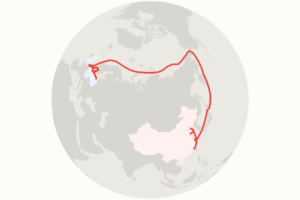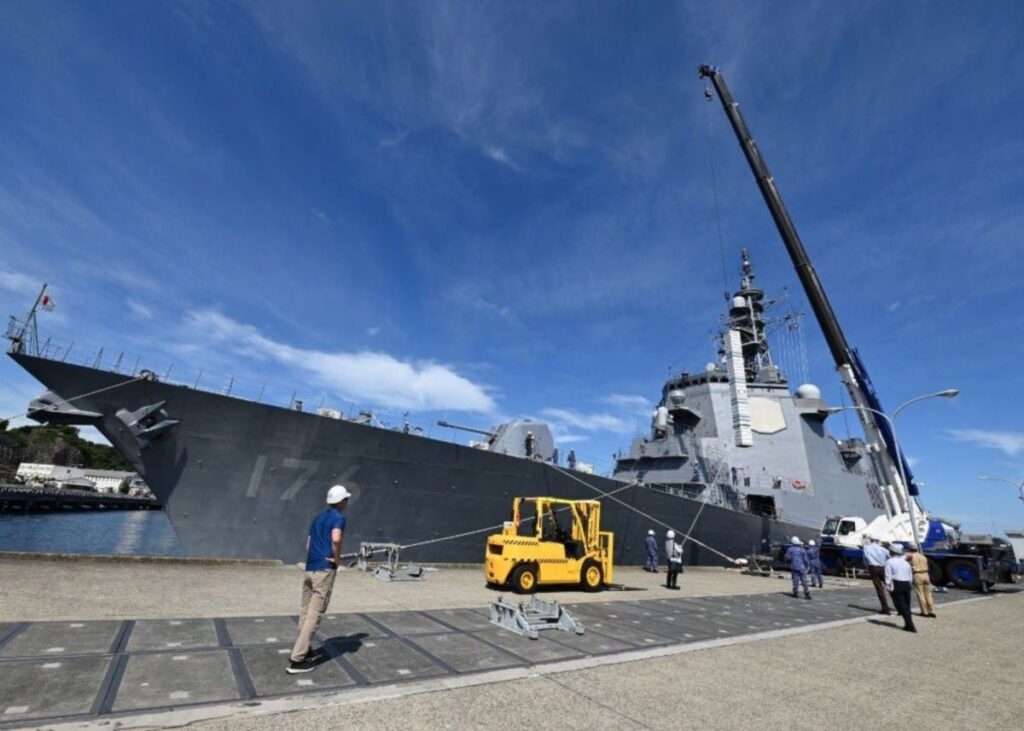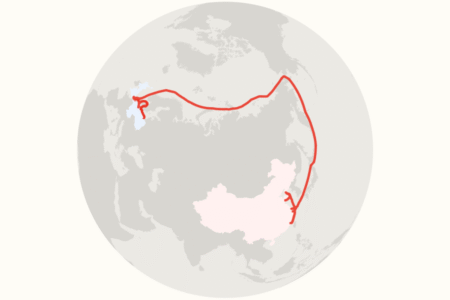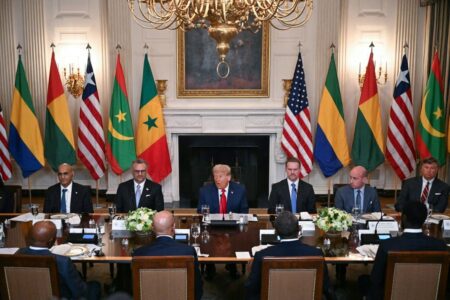Nuclear-armed North Korea has warned that it will not ignore JapanŌĆÖs acquisition of long-range Tomahawk cruise missiles from the United States, which the regime has called a ŌĆ£first-strikeŌĆØ capability threatening its national security.
Why It Matters
Pyongyang’s warning compounds tensions in East Asia, where the U.S. and its two main regional alliesŌĆöJapan and South KoreaŌĆöface the rapid expansion of North Korea’s missile and nuclear programs and a Chinese military buildup that has raised fears that it might invade self-ruled Taiwan.
Japan, part of the first island chain under a U.S. strategy to contain China and other adversaries in the Western Pacific, is acquiring 400 Tomahawk missiles capable of conducting precision strikes from 1,000 miles away. The U.S. weapons are a stopgap in Tokyo’s plan to develop and deploy its own long-range missiles nationwide for a credible counterstrike capability.
What To Know
Japan has been bolstering its armed forces with the acquisition of both offensive and defensive capabilities and it recently deployed the destroyer JS Chokai to San Diego for upgrades and training with the Tomahawk missile. Before its departure, the ship conducted dummy Tomahawk missile-loading training at Yokosuka Naval Base, just south of Tokyo at the mouth of Tokyo Bay.
In a commentary on Sunday, North KoreaŌĆÖs state-run Korean Central News Agency said the Japanese shipŌĆÖs mission, and JapanŌĆÖs rearming more generally, was ŌĆ£reaching a dangerous phase.ŌĆØ┬Ā
ŌĆ£Japan has already finalized preliminary preparations for the use of long-range attack weaponsŌĆ”and it has entered into the final stage to equip its Aegis destroyer with the Tomahawk cruise missiles,ŌĆØ KCNA said.
ŌĆ£All facts suggest that Japan has launched into the deployment of means of long-range strike for preemptive strike in earnest,ŌĆØ it said. ŌĆ£The situation can never be ignored.ŌĆØ
Last month, the U.S. deployed a Typhon midrange missile system to Marine Corps Air Station Iwakuni in southwestern Japan. The U.S. Army’s road-mobile system can launch the 1,000-mile Tomahawk cruise missile as well as the Standard Missile-6, which has a range of 290 miles.
Newsweek‘s map shows the Tomahawk missiles putting all of North Korea and parts of China within striking range, while the SM-6 can cover key coastal areas around the base.
Tokyo and nearby Seoul both have expressed concern over North Korea’s development of long-range, nuclear-capable ballistic missiles in defiance of multiple U.N. prohibitions. North Korea conducts frequent missile tests that send projectiles over Japan or into nearby waters.
The U.S. Defense Security Cooperation Agency, which is responsible for foreign military sales, said in 2023 that the sale of Tomahawks to Japan ŌĆ£will support the foreign policy goals and national security objectives of the United States by improving the security of a major ally that is a force for political stability and economic progress in the Indo-Pacific region.ŌĆØ
What People Are Saying
North Korea’s state-run KCNA said in a commentary on October 19: ŌĆ£The military moves of Japan in recent years have been directed to perfecting its capability for preemptive attackŌĆ”. What is more serious is that the long-range weapons possessed by Japan have [North Korea] and other regional states within their striking range.ŌĆØ
The Japan Maritime Self-Defense Force said recently: “Our stand-off defense capabilities are steadily progressing as we strengthen ties with the U.S. Navy and build readiness.”
What Happens Next
According to the specialist U.S. publication Naval News, Japan operates eight destroyers, all of which will be upgraded with Tomahawk missiles.┬Ā
Read the full article here














